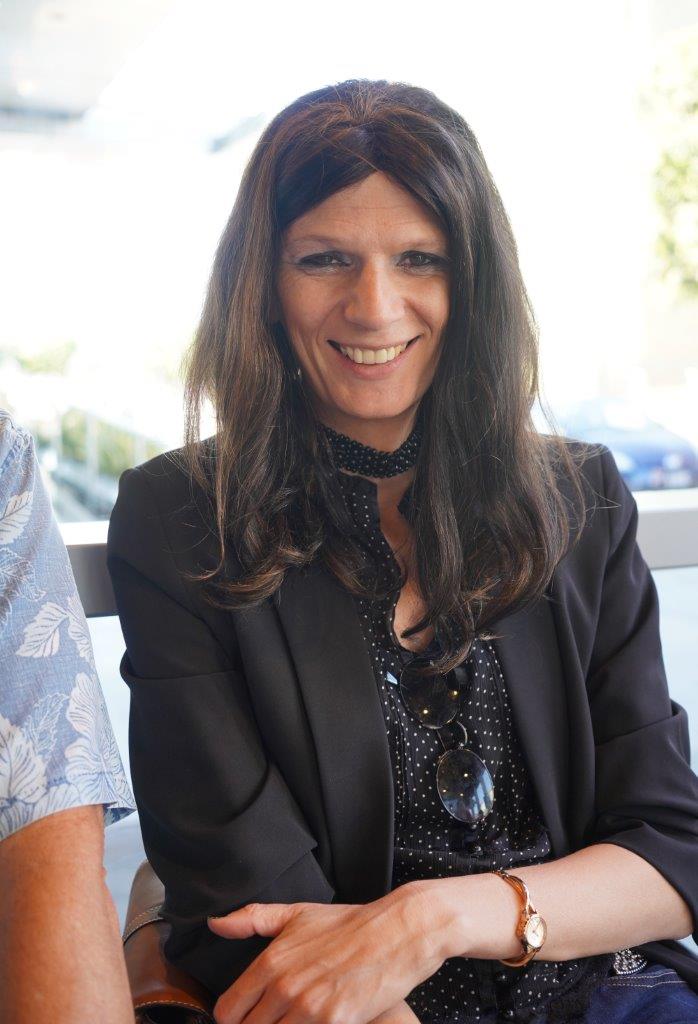It has been one of the most challenging periods in cinema exhibition with many venues across the world, alongside other mass entertainment venues, closed down due to the COVID-19 outbreak that continues to cause much concern and consternation for businesses that rely on good attendances to keep going.
Another key element is the exhibition and presentation of old films in the format they were originally projected in on their release decades ago.
One such individual who is continuing to preserve the good name of good old fashioned 35mm and the specialist format of 70mm for some classic showcases like STAR WARS and DIE HARD is Rebecca Nicole ‘Nikki’ Williams, aka ‘The Celluloid Sorceress’, who is a key spokesperson on the cinema circuit at venues like the National Science and Media Museum in Bradford and The Prince Charles Cinema in London amongst others.
Championing the cause of old classic prints and rarities that have seldom been seen since their original release with seasons like one that was recently put together for the recently-deceased Joel Schumacher (THE CLIENT, ST. ELMO’S FIRE), Williams continues to campaign to get more rare-seen titles out on the big-screen.
Film And TV Now recently spoke with Williams about the state of the cinematic landscape and involvement in the industry.
FILM AND TV NOW: Your father worked as a manager in your home-town at one of the key cinemas. What was it like growing up in a household where cinema was such an integral part of life?
REBECCA NICOLE WILLIAMS: Actually, Dad managed the Theatre Royal in Nottingham, home-town to both of us. He moved from cinemas into theatre when bingo was the greatest threat to exhibitors.
In those days you had very little say in where the company might send you and he also wanted to stop moving around and be closer to my grandparents. After many years up and down the circuits though, he knew all the managers in town personally and well.
Mum wasn’t a huge film lover but she understood the business she was marrying into, and the routine at home was based around the schedule of the theatre and what time Dad needed to be there to open house in the evening. Unlike a lot of managers Dad would stagger his hours and make sure he spent some time at home each day so I’d see him in the afternoons when I got home from school and, as he’d be working 5 or 6 nights a week, he’d take me to the cinema on his days off.
By my mid-teens I was a part of the furniture at all these places. Usually the Theatre Royal would be dark on a Sunday night and so Sunday night would be movie night at home. Dad believed in balance though and my parents always encouraged me to do other things as well as watch lots of movies.
FTVN: Tell us about your early experiences working around exhibitions and screenings of prints.
RNW: Like many of us I did my stint working the door and flogging popcorn at the local ABC. The succession of managers there had all been particularly good friends of Dad’s and that was probably where I spent the most time hanging out.
When I found myself on a year out before university a position came up which I took for a while and, with the shift in relationships that brought about, I found myself most at home and welcomed by the projectionists who were all quite taken with my pure enthusiasm for showing films.
In 1991 there were four projectionists for three screens, and these guys were unusually strict about print care and, looking back, predicted the historical value they would have in the future as technology constantly changed.
Working on the door was an education in the nature of audiences, which films would pull big crowds and have enduring popular appeal, which would start small but sprout legs, which would start big but quickly die, but also which really great films would slip through the cracks and go thoroughly unrewarded. I don’t regret my choice not to go into cinema management, but I do wish I’d stuck around long enough for the projectionists to finish teaching me all the ins and outs of the DP70s.

FTVN: Being ‘The Celluloid Sorceress’ provides you with an opportunity for you to present some memorable films and key rarities that haven’t been seen in 35mm since their initial release, often relegated because they didn’t get the exposure or success they deserve. Which films have given the most satisfaction when you have screened them?
RNW: That’s a tough one! Rare can be relative sometimes.
For example, when I took True Romance out to the Duke of York’s in Brighton the house was 100% sold out within days and when I got up on stage to intro the thing I got a chorus of thank yous and a standing ovation, because the repertory scene isn’t necessarily as rich everywhere as it is in London, or cities such as Bristol or Nottingham where they have the Watershed and Broadway respectively. That was very touching.
We had a terrific run at the Duke’s and it was a great opportunity for me to show better known titles that I wouldn’t show in London where they’re already part of the repertoire.
There’s also been a lot of satisfaction in the films I’ve really gone to bat for, even if they didn’t always pull big crowds. I’m probably most proud of my Gilda Radner retrospective at the Phoenix, East Finchley, and the involvement and support I had from the Wilder and Radner families.
The makers of the terrific documentary Love, Gilda made it that much more resonant, being able to feed back to them the responses from long time fans who had been waiting for 30 years to see these films on the big screen again, as well as the reception from those just discovering her genius and body of work.
FTVN: You have recently done a season of Joel Schmacher films, titled ‘SCHUMAC-ATTACK’ and a couple of John Badham favourites amongst fans, BIRD ON A WIRE and THE HARD WAY, which both played at the Prince Charles Cinema in London. Tell us about the process of securing these prints and how challenging is in terms of rights and getting a venue to screen them?
RNW: Print and rights sourcing each come with their own issues. Some titles are easy, if prints and rights are both held by the same distributor.
Sometimes, though, you can find a print, but the rights have lapsed or been sold and resold and the chain is no longer clear. So you have a print but you can’t screen it. Then there’s the times you have the rights but you can’t find a print and you have to decide whether to swap out for DCP, or often Blu-Ray.
It’s a myth that there’s a DCP of everything. There really isn’t. My process is fairly simple. I always source my film and the rights before I approach a venue, and that will mean reaching out to distributors first, then consulting archives. Every curator goes through the nightmare of titles in rights limbo at some point, which means reaching out just about every company who has ever been involved with the film just trying to score a lead.
Some films, such as Naked Tango, have rights that have reverted to the film-makers themselves, often the producer and reaching out to them, if possible, can sometimes score a win. It requires a lot of patience but if you do manage to reach people that way they’re usually so thrilled that there is interest in their work they’re very helpful. Although others ask for stupid amounts of money and as a result some major titles remain unrevived..
Getting a venue can be just as hard, especially when you’re starting out. Venues have to make money to survive, especially now, and many can’t just take the chance on an obscure title that might only draw 20 people. Some independent programmers build up their events and draw people to the film via the add-ons, others spend a decade or so cultivating an audience of followers who will take a chance on a film because the brand of the presenter is trusted.
FTVN: The opportunity to screen films in 35mm and 70mm is diminished considerably from when some of those old titles got prestige first-run presentations from the 1950s and 1960s. Are there any titles you would love to show in 70mm which still have a print available somewhere which you would love to get hold of?
RNW: I wouldn’t want to get people’s hopes up on 70mm. There’s not a great deal out there, and a lot of it is abroad and too expensive to ship. I have had my eye on archive 70mm prints of Blue Thunder for a while, and there’s one of GREYSTOKE – THE LEGEND OF TARZAN, LORD OF THE APES (1984), if memory serves. I have a long list somewhere. There’s several in the US I’d like to bring over if it ever becomes economically viable.
FTVN: Sometimes the quality of prints through ageing reveals they are pink in tone because the dye on the celluloid has faded. We saw this on your recent screening of the Badham classic SATURDAY NIGHT FEVER, which was one of the original BBFC ‘X’ prints from 1977, complete with CIC logo. Some people don’t like the pink-ish quality, even though the print available might be the only one. I know THE THING in 70mm had a similar issue as it was the only print left in the UK when that screened at the Prince Charles. Given that people do like to see old films in their original celluloid format, can distributors and film-makers do more to help preserve the quality of the film?
RNW: Sadly, if prints haven’t been well cared for there is nothing anyone can do. And prints from before the mid 1980s will almost always have faded, unless on a colour fast system such as IB Tech, or if they’ve been in cold strange for decades.
Caring for the good prints that remain is essential, and sometimes they do have to go under glass for preservation if they’re the only copy left. Really, if I was to stick my neck out on this, archives need the resources to properly sift what they have which sometimes is tens of thousands of unchecked prints.
There just isn’t the money for that in staffing and other on-costs. Equally, you’re more likely to see new prints made, or old prints revived of titles that are guaranteed to bring a return at the box office.
In the case of the SATURDAY NIGHT FEVER screening which took place at the Genesis Cinema in Mile End in London, we followed the example of the Prince Charles Cinema and added information about the print condition so people knew before they bought a ticket, which is fair and saves some trouble all round.
I took a couple of photos during the print test and out them out on social media. We sold more tickets because the print was an original 1977 and was faded than those who came just to see the film. There was a lot of talk after the show about it. It gave the audience a real feeling if authenticity, the physicality and vulnerability of the materials and a tangible sense of time and place.
A film on film show isn’t solely about the film, but also about the technology and there are many fans of that, of all ages, not just those looking for nostalgia.
FTVN: What seasons would you like to consider for the future if you can organise them?
RNW: I’d like to show more of John Badham’s work and hope to screen some more Joel Schumacher titles. It’s hard think in terms of seasons at the minute, largely because everything is so unstable in the industry right now and as an independent it’s hard for venues to give over that much time. It’s been a weird hiatus, but as cinema gets back on its feet I’m sure I’ll be flooded with ideas again.
FTVN: The BFI have a big archive of films that they screen at the BFI South Bank. How difficult is it to secure some of these archive prints for screening and why do some films never get played at a venue like the Prince Charles, which does have a considerable built-in audience commitment with its membership?
RNW: Ha-ha. Now you’re asking me to tell tales out of school!
I don’t really want to speak for either institution, but the answer is pretty simple and a major part of it is down to projection facilities. Firstly, any archive will want to check a print themselves before agreeing to loan it. Then if they loan it there will be restrictions on how it is presented, and almost all will require a set up with two projectors so each reel can be shown separately without the need to splice reels together.
In 2020 it’s a big deal to find a venue that has ONE 35mm projector, let alone TWO! Many venues would have originally had two, but then lost one to accommodate the digital projector and booths are so small that, even where a venue would love to put a second one back in, it’s no longer feasible due to space restrictions.
FTVN: Who do you have the best relationship with, in terms of cinema venues?
RNW: All my relationships have been good (I think). Programmers like the fact I do all my own background and sourcing and bring things t them ready to go. I get on well with projectionists because I know enough about what’s involved in their role to respect their craft, know what I want and how to communicate it if there’s an issue.
After the recent closures I’m back working with the Genesis Cinema, Mile End, who just keep inviting me back again and again. We’re cautiously screening the great romantic comedy GROSSE POINTE BLANK on September 24th, which I hope will draw the usual crowd of great people and build some good energies.
I hope in 2021 to work with the Prince Charles Cinema again but I miss all my regular haunts and, of course, I’m always open to invites!
FTVN: Given the challenges facing us with the coronavirus outbreak that effectively closed all cinemas for a time for part of 2020, what would you like to see done to help preserve the venues for when they re-open down the line?
RNW: You have to understand that I care a great deal more about historic venues such as the Duke of York’s, the Phoenix East Finchley or the National Media Museum and our independent venues than I do about garden variety multiplexes.
I am greatly concerned that some of those may, going forward, need intervention so the buildings don’t get sold, or have equipment ripped out. Some are still at very great risk even though the industry is starting to open back up. Of course, some of our most precious venues are owned by chains, some of whom haven’t treated their staff very well through this and who have, at best, questionable Covid-19 safety practices.
Keeping people in work is so important, and it challenges one’s ethics when there are issues around companies whose collapse would leave people unemployed, and also jeopardise venues we should be protecting as part of our cultural heritage. Whether the government will ever provide effective support to the arts sector remains to be seen.
I think, as always, cinema is going to be reliant on those who love it to support it and keep it alive. To be clear, I do not in anyway advocate a mad rush to reopen everywhere and pack people in without due precautions. A slow and careful approach is essential. Imagine if your favourite cinema reopened, threw caution to the wind to get the cash flowing again, then became a hotbed of Covid hell and had to close again? That’s when it’s game over.
All I can ask of people is to support their favourite venues. If you can, buy a membership or donate to a fundraiser. But most of all, we all have to keep the faith. It sounds like a platitude, but we will endure. We will be strong again and so will our film culture. Look at the way it’s starting to bounce back already! Everyone needs to just . . . keep the faith.
For further updates from ‘The Celluloid Sorceress’, click on the following social media feeds:
FACEBOOK: https://www.facebook.com/SorceressOfFilm
TWITTER:
WEBSITE:
For news and screenings at the venues mentioned in the interview, click on the following links:
THE PRINCE CHARLES CINEMA:
https://princecharlescinema.com/PrinceCharlesCinema.dll/Home
THE NATIONAL SCIENCE AND MEDIA MUSEUM, BRADFORD:
https://www.scienceandmediamuseum.org.uk/





























